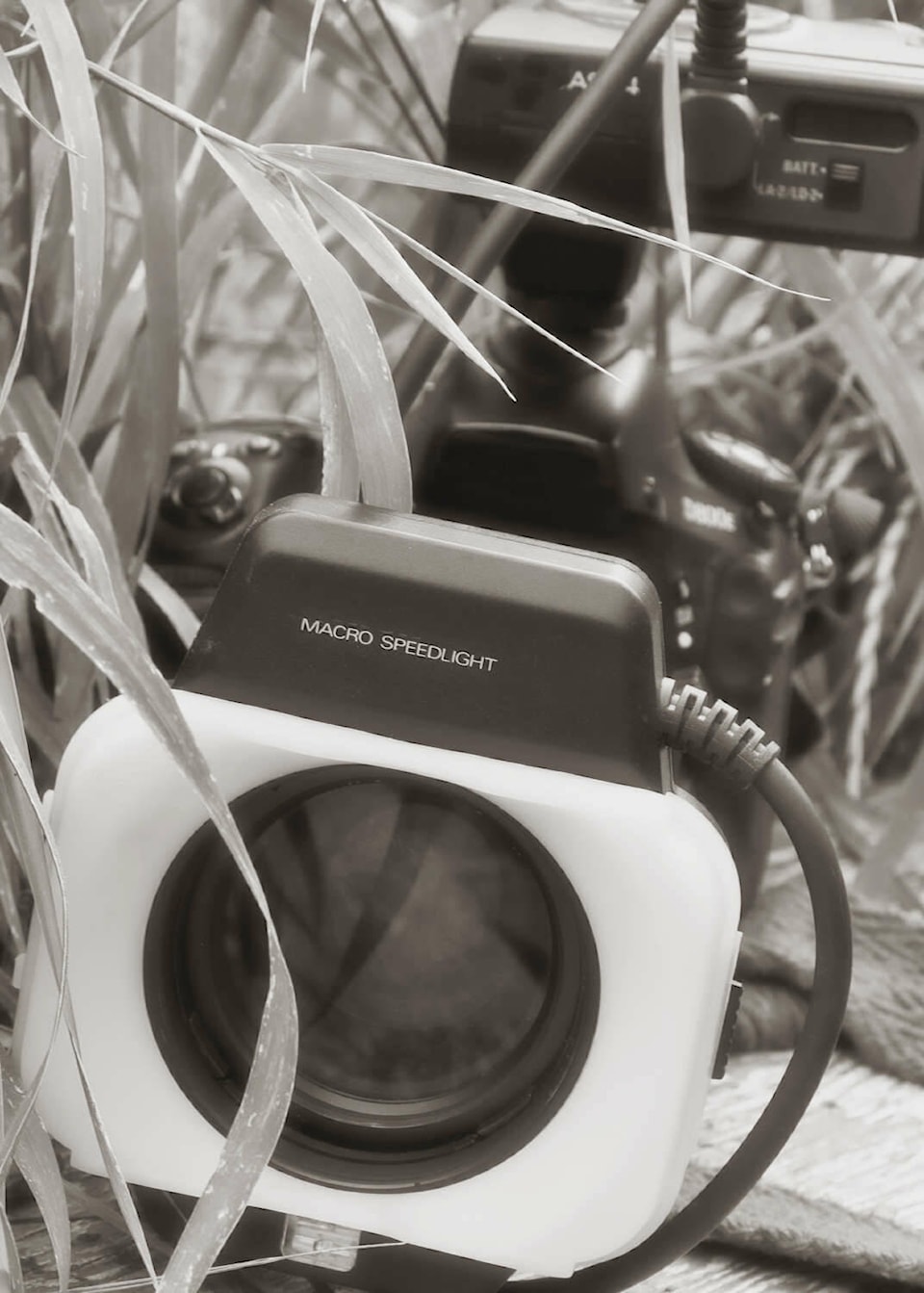The weather has been so strange. Hot days that were suddenly followed by three afternoons of deafening thunder, blinding lightning and gazebo destroying rain.
Then finally, on the fourth day, even with the clear blue sky, the temperature drooped and it was no longer so uncomfortably hot at my home in Pritchard.
I haven’t spent any time checking the garden, and I really wanted to get some photos of the my summer garden, so just before the sun went down I put a 200mm macro lens mounted with a macro Ring Flash on my camera and headed out.
In spite of the dry plant wilting days, and then the pounding rain, there were sunflowers everywhere.
My friend Jo McAvany took a bag of seeds, planted a few in three dirt filled barrels and scattered the rest all over in the garden area. I had stopped a couple times to water the sunflowers in the barrels, but ignored the rest.
I have mentioned using a macro ring light in the past. My macro ring flash is a small battery operated flash that fits around the front of a lens and connects to the camera’s hotshoe.
A camera flash we are used to produces a wide light that unless modified will illuminate all the flowers in the flower bed, whereas the macro ring light gives a narrow and less powerful illumination that quickly decreases after lighting the subject one focuses on.
I have used my ring flash on 50mm, 100mm and 200mm lenses and I like my 200mm the best.
The 200mm allows me to stay back from my subject like any telephoto lens does and using longer lenses saves other plants from being stepped on. Using a ring flash on a long lens also makes a softer light.
For those interested in getting a macro ring light, there are many different incarnations available. Mine is an older one that was made in the 1970s. It had TTL and auto functions for the auto focus cameras at that time, but with my modern DSLR I must select distance, aperture and shutterspeed manually. That’s not hard, I just do a few tests for the best natural light exposure, and then only have to stay at distances that don’t under or over expose my subject.
The newer versions of my ring flash are made for modern digital cameras. A Google search will bring up all kinds. Choose one, search out positive reviews and make sure it will work on your camera.
There are large studio type ring flashes that are made for portraiture. Some are constant LED lights for videos. Those big ring lights are great for those uses, but not for the kind of closeup macro photography I do in my garden. The macro light is small and fits tight on a macro lens.
I have always enjoyed photographing the plants outside my door. I can do that anytime I want, it is relaxing, and I am sure even stress relieving. For a gardener, that can be the next fun step after growing something.
I am not good with the names of plants. To me flowers and such are just great subjects. My garden has weeds and not much structure. However, everything is a photo opportunity, and if, like me, you want to enjoy photography a few steps out the front door just get a macro lens and a ring flash. Then use it anytime of year, or in any kind weather.
Stay safe and be creative. These are my thoughts for this week.
Contact me at www.enmanscamera.com or emcam@telus.net.
_______________
Like us on Facebook
